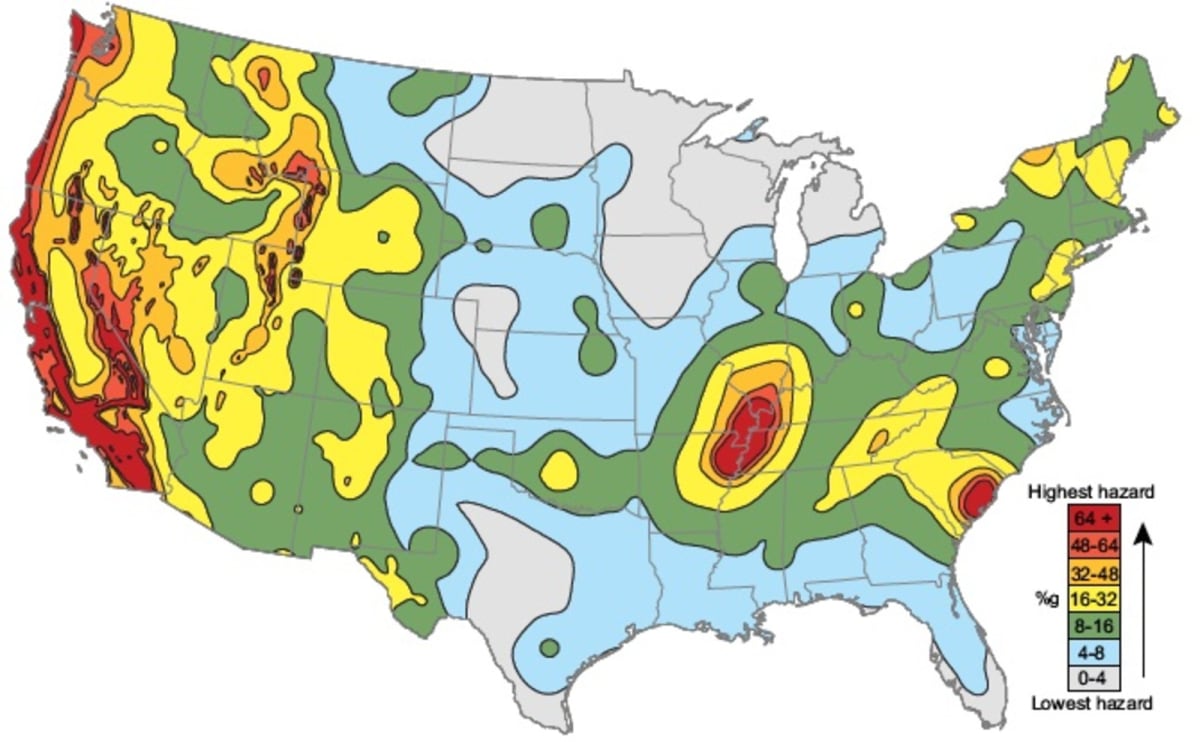
Earthquake Safety
July 7, 2019
Earthquakes are the sudden rapid shaking of the earth, caused by breaking and shifting underground rock. They can collapse buildings and cause heavy items to fall. This often results in injuries and property damage.
While most people think earthquakes happen only on the West Coast, they can actually strike at any location at any time. Higher risk areas include California, Alaska, and the Mississippi Valley. According to the Red Cross, 45 out of the 50 states are at some type of earthquake risk.
According to the Federal Emergency Management Agency (FEMA), earthquakes happen without warning. They cause fires and damage roads. They can also be the cause of tsunamis, landslides, and avalanches.
While that might sound a little intimidating, there are things you can do to help protect yourself during an earthquake. Some of those things are avoiding travel across bridges and pulling your truck over at the nearest off ramp. It is also a good idea to stay in your rig and to avoid breathing in any dust that may be circulating through the air.
It's interesting to note that Aristotle believed earthquakes were caused by winds trapped in subterranean caves. He stipulated that small tremors were caused by air pushing on the cavern roofs, and large ones by the air breaking the surface. This theory lead to a belief in something called "earthquake weather."
In Aristotle's time, it was thought that because a large amount of air was trapped underground, the weather would be hot and calm before an earthquake. According to the Hurricane research from USGS, later theories proved that earthquakes occur in any kind of weather, and that they are usually preceded by strong winds, fireballs, and meteors.
According to USGS, there is some evidence that suggests very large low-pressure changes associated with major storm systems (typhoons, hurricanes, etc.) are known to trigger episodes of fault slip (slow earthquakes) in the Earth’s crust and may trigger an earthquake. For the most part, however, there is no way to predict one. For that reason, drivers must be prepared.
If you're ever behind the wheel and an earthquake is happening, remember the safest thing you can do is to pull over and stay in your rig. For more information on earthquake safety, FEMA offers suggestions via an online fact sheet available here:
https://www.fema.gov/media-library-data/1527865427503-bbf6d7e61340e203c4607677cb83a69d/Earthquake_May2018.pdf
https://www.fema.gov/media-library-data/1527865427503-bbf6d7e61340e203c4607677cb83a69d/Earthquake_May2018.pdf
At Millis Transfer, we care about the safety of our drivers, especially in times of natural disaster. That's just one more reason, our drivers recommend us so highly. We're there when you need us. If you would like to learn more about available positions at Millis Transfer, give us a call at 1-800-937-0880.
About Millis Transfer
Millis Transfer, Getting It There Since 1936, has an impressive service record earning dozens of “Carrier of the Year” awards. Headquartered in Black River Falls, Wis., the company raised driver pay two times in 2018. Extra perks for Millis drivers include a maximum pay rate of 47-58cpm, beautiful and well-maintained equipment, and a long list of amenities and benefits. Maintenance facilities and drop yards are also strategically located throughout the company’s operating area. Its sister company, Millis Training Institute, offers five school locations that provide students with quality training in order to earn their CDL-A license. To learn more, please visit www.millistransfer.com or www.mtidriving.com.
Millis Transfer, Getting It There Since 1936, has an impressive service record earning dozens of “Carrier of the Year” awards. Headquartered in Black River Falls, Wis., the company raised driver pay two times in 2018. Extra perks for Millis drivers include a maximum pay rate of 47-58cpm, beautiful and well-maintained equipment, and a long list of amenities and benefits. Maintenance facilities and drop yards are also strategically located throughout the company’s operating area. Its sister company, Millis Training Institute, offers five school locations that provide students with quality training in order to earn their CDL-A license. To learn more, please visit www.millistransfer.com or www.mtidriving.com.
